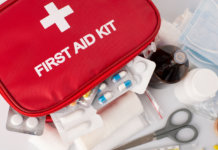Doctors and school administrators have been warning us for some time but it took the first lady of the United States to make it truly hit home for many parents: our children are becoming overweight. And obese children tend to become obese adults.
Childhood obesity continues to increase in the U.S., Canada, Great Britain, the Middle East and some European countries e.g. Italy, Spain, Greece as compared to Scandinavian and other European countries.
Obesity among American children has more than doubled and among adolescents has quadrupled over the last 30 years. Today, children are taking the same medicines to manage high cholesterol, hypertension, and diabetes as their parents and more than 70% have at least one risk factor for cardiovascular disease. But why?
According to The Obesity Society, the leading organization dedicated to the study of obesity, the two main causes of childhood obesity are lack of physical activity and unhealthy diets. Modern lifestyle changes only exacerbate the causes e.g. more frequent snacking, larger food and beverage portions, easy access to fast food options, and more sedentary activities like TV, social media and computer games versus sports and other outdoor recreation. And parents are seemingly part of the problem as well:
According to the Journal of Maternal & Child Nutrition, a 2013 study revealed that 62% of parents of obese children don’t see their children as having unhealthy weight.
The four pillars of First Lady Michelle Obama’s “Let’s Move Campaign” are worthy of the attention of parents of young children: nutrition, physical activity, healthy foods and personal responsibility.
Since children and adolescents spend so much time there, schools can play an important role in addressing childhood obesity, starting with more nutritious meals. One innovative strategy for getting kids to choose healthier school lunchroom options is for the school to hire a professional chef to create healthy, tastier meals. The Chefs Move to Schools program is part of first lady Michelle Obama’s Let’s Move Campaign. Top notch chefs are partnering with the White House to offer cooking lessons to parents and students, help start organic gardens on school grounds, and participate in adopt-a-school efforts to makeover school lunch menus nationwide. Nearly 1,000 chefs, including notables likes Rachel Ray and Tom Colicchio have joined the “Chefs Move” movement
In summary, here are eight actions that a parent can begin immediately to help their child and/or adolescent avoid a lifetime of obesity:
- Discuss obesity factors with your children and adolescents, as appropriate. Help them understand the impact of good nutrition and physical activity so they take personal responsibility for their healthy behaviors and habits. Reward them for those behaviors.
- Get your children involved in sports and other recreational activities that get/keep their bodies in shape. Limit sedentary activities and non-active habits.
- Be a good role model for your children regarding healthy behaviors. (Hint: You can’t send them to school with super-healthy lunches and regularly eat fast food meals for lunch yourself.)
- Engage your child in grocery shopping and preparing healthy meals at home. There are numerous web sites for educating them on nutritional foods and healthy, simple-to-make recipes.
- Purchase and maintain a pantry of healthy snacks that children – and the rest of the family — can help themselves to, as allowed. Monitor snacking and set limits.
- When hosting birthday parties and other childhood activities, provide healthy refreshments and prizes, even if it initially goes against the norm. Alert and get buy-in from other parents to do the same. (Hint: There is power in numbers.)
- Get support from others — grandparents, relatives, friends – in encouraging and reinforcing healthy eating and physical activity. If your child/adolescent is already obese, address the issue directly and ask for assistance in addressing the problem.
- Get involved at your child’s school by exploring what, if anything, the school is doing to provide healthy, nutritious meals and address childhood obesity. If the school does not a plan, request starting a parent committee to offer ideas and resources to move the school forward on this issue.
A study published in the January 2014 issue of the New England Journal of Medicine involving more than 7000 children found that, among the children who were overweight in kindergarten, one-third were obese by the time they reached eighth grade. Childhood obesity does not have to be a lead story if we all work at changing it. And, for the sake of our children and future generations, we need to change it soon.
Resources:
The Obesity Society: http://www.obesity.org
Action for Healthy Kids: http://www.actionforhealthykids.org
LiveFit Kids: http://www.livefitrevolution.org
Sound Body, Sound Mind: http://soundbodysoundmind.org
Super Healthy Kids: http://www.superhealthykids.com





Child Obesity is a growing issue in america, we need to create awareness on the matter, any opinions…